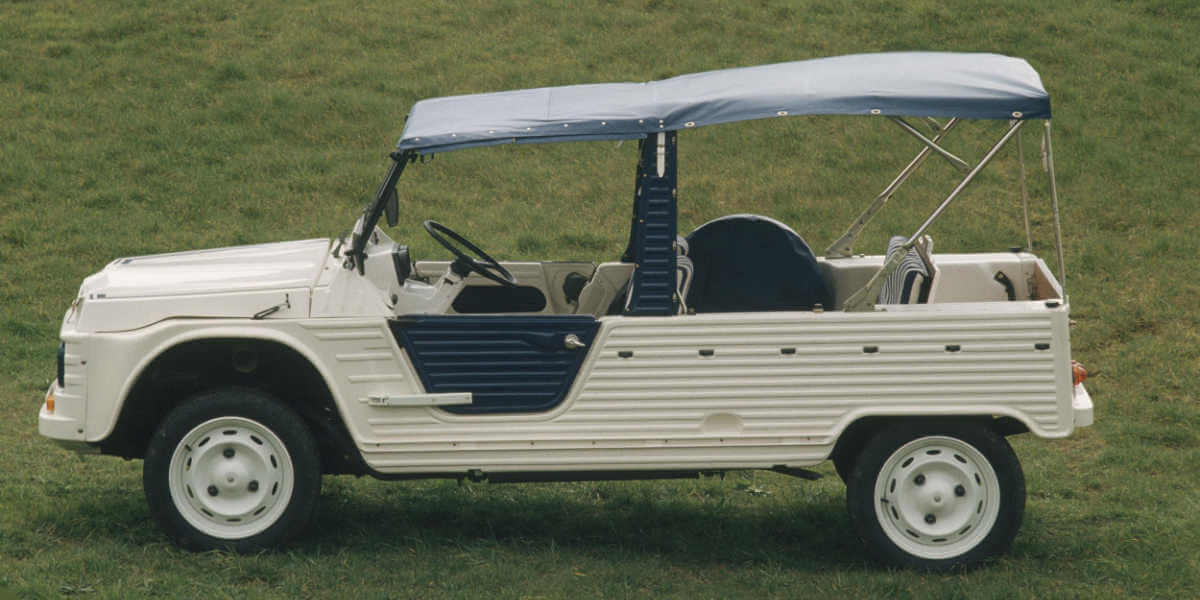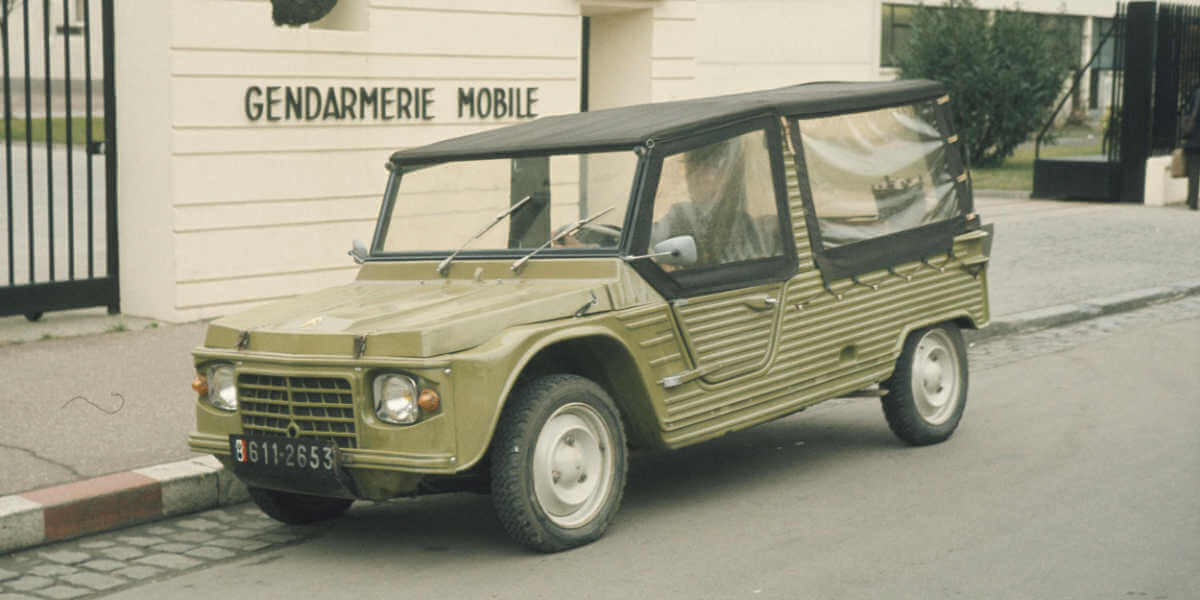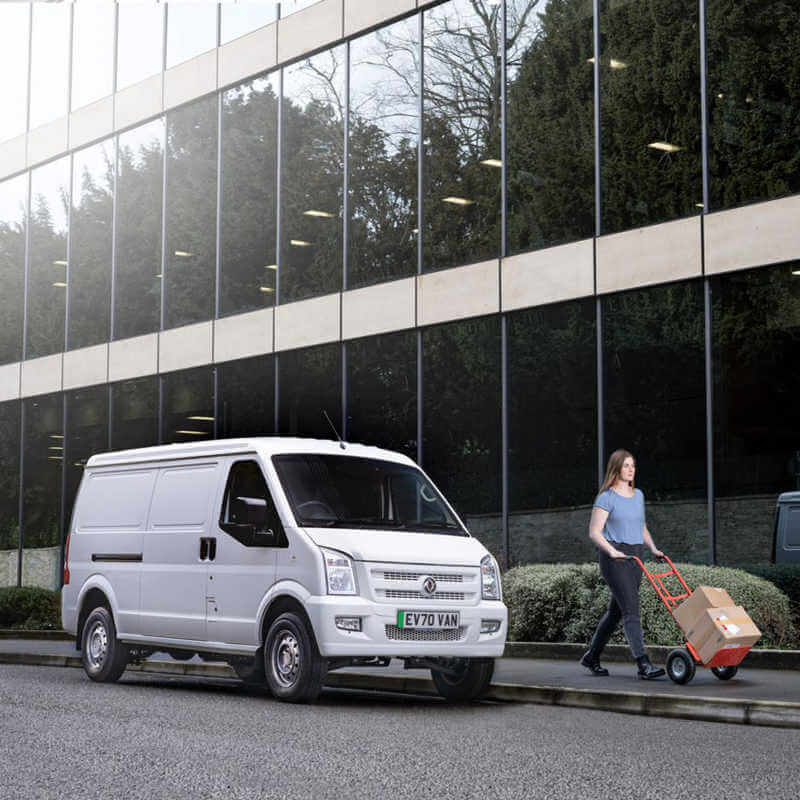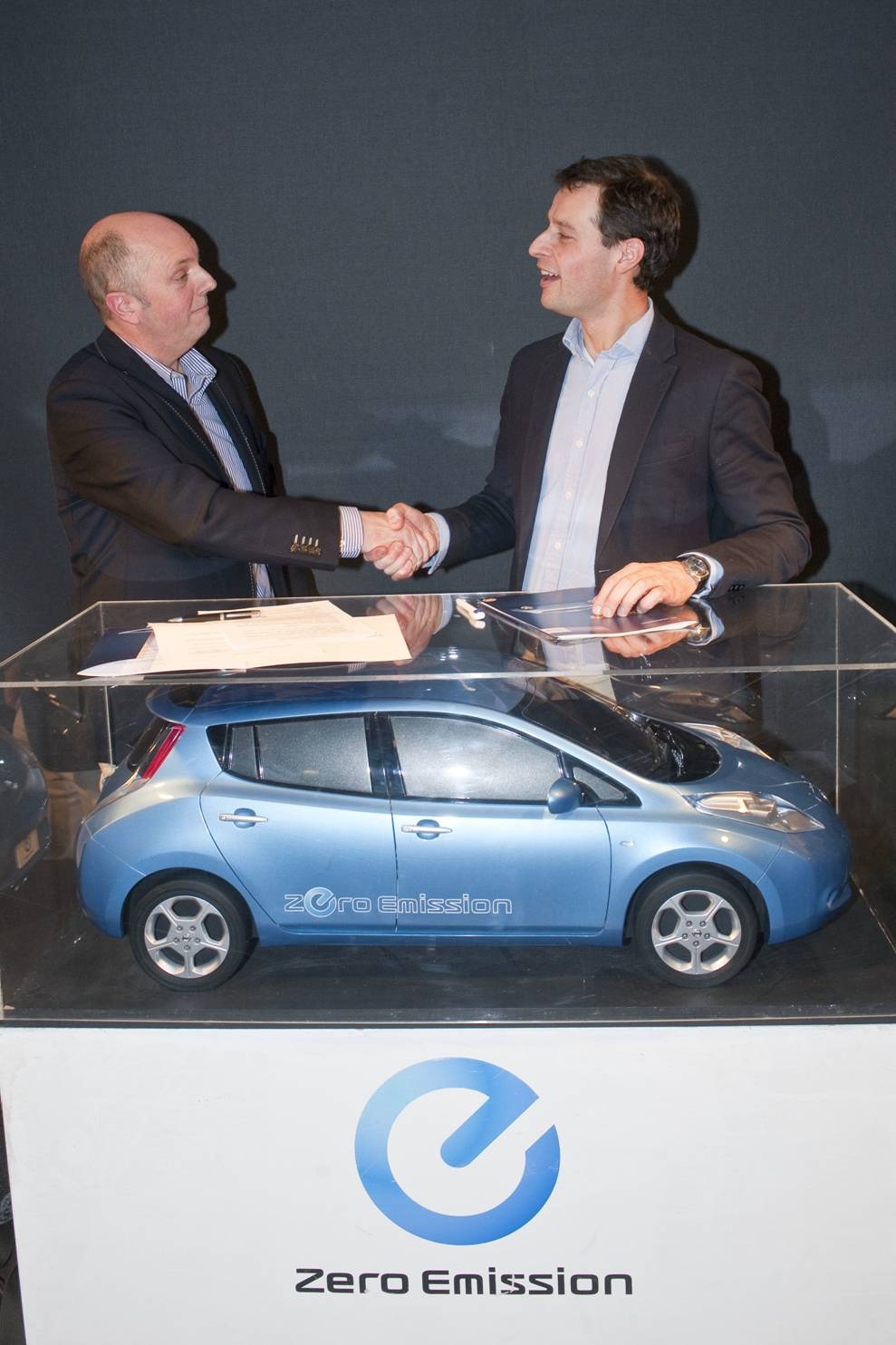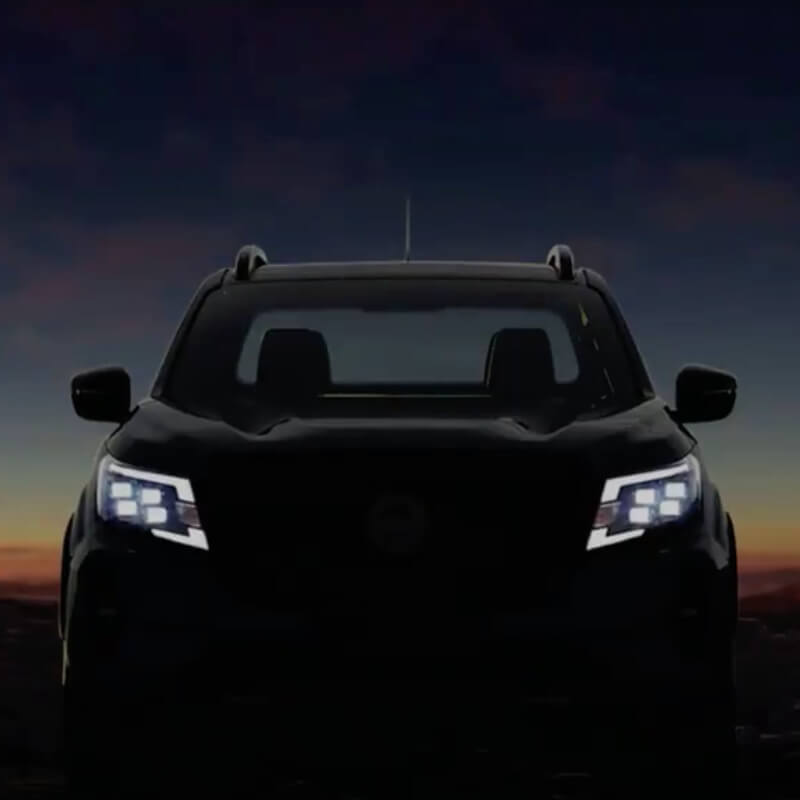Citroën Mehari Still Inspiring 55 Years Later
It was on 16 May 1968, 55 years ago, at the heart of the French student protest movement, that Citroën revealed its new vehicle at the Deauville golf course: the Mehari. An atypical pick-up offering from 28 to 32 hp, with an ABS (acrylonitrile butadiene styrene) plastic body, designed by Roland de La Poype. Built on a Dyane 6 platform, it was presented with the name Dyane 6 Mehari on his release. Produced for almost 20 years between 1968 and 1987, 144,953 units were built (including 1,213 4×4 Mehari), making a surprising success for this unusual vehicle. The Mehari was produced, for the most part of it, in the Citroën factory in Forest, Belgium, but also in seven other factories in France, Spain and Portugal.
Article by: Citroën
An all-terrain and all-season vehicle.
The name of the Mehari comes from the masculine name mehari which is the name given to dromedaries in North Africa and in the Sahara. These animals are known for their off-road ability, their resistance and their sobriety. The mehari is able to transport both goods and passengers over long distances. This name is therefore very representative of the Citroën Mehari model, known for its adaptation to all terrains. It’s a vehicle with many capacities.
From the outside, the Mehari doesn’t really seem to be suitable for all seasons, as it looks more like a small convertible used during the summer holidays. Thanks to a winter cover, the car is completely sealed, which makes it a car that can be used all year round.
Practical, modular and economical.
The Mehari is highly modular, being able to transform part of its floor into a backrest, which allows it to add two seats at the rear and thus accommodate up to 4 passengers. It can be used in a wide range of situations, carrying both different loads and a reasonable number of passengers.
The car body is made up of only 11 easily repairable parts and can be cleaned with a single blast of water both inside and outside. This makes the car easy to maintain and economical for its customers.
A true childhood memory for a whole generation, this atypical, modular and economical concept designed with modern materials for the time and innovative bodywork has become a true automotive icon over the years.
Three mythical versions.
Although it was produced for almost 20 years, the Mehari only had three different versions, including two limited editions. In 1983, two special editions were launched. Firstly the Méhari plage, with its holiday look and flashy yellow colour, which was sold in Spain and in Portugal. And, in April 1983, the Méhari Azur was launched on the French, Italian and Portuguese markets in just 700 units. In 1979, Citroën introduced a new variant with the 4×4 version, which offered a freedom that is almost unequalled even today.
A particularly diverse career.
The Mehari is a vehicle of particular interest to public administrations such as the police, customs, airports, racecourses and many others, but also to shopkeepers, craftsmen and private individuals.
It had the opportunity to have a long career with the French army, which ordered a total of 11,457 Mehari between 1972 and 1987.
The Mehari 4×4 has a career in medical assistance on the roads of the world. It took part in the Paris-Dakar Rally in 1980, in which ten 4×4 Mehari were chartered to provide medical assistance along the route. Finally, the Mehari had a great cinematographic career, especially thanks to the famous film Le gendarme de Saint Tropez with Louis de Funès.

